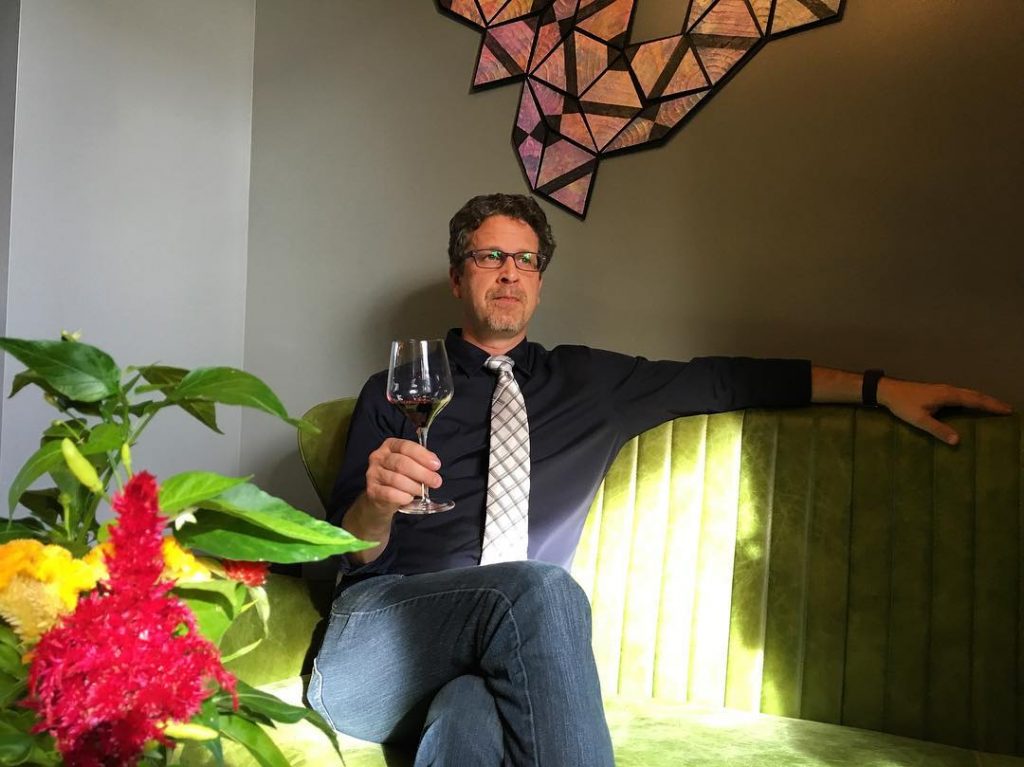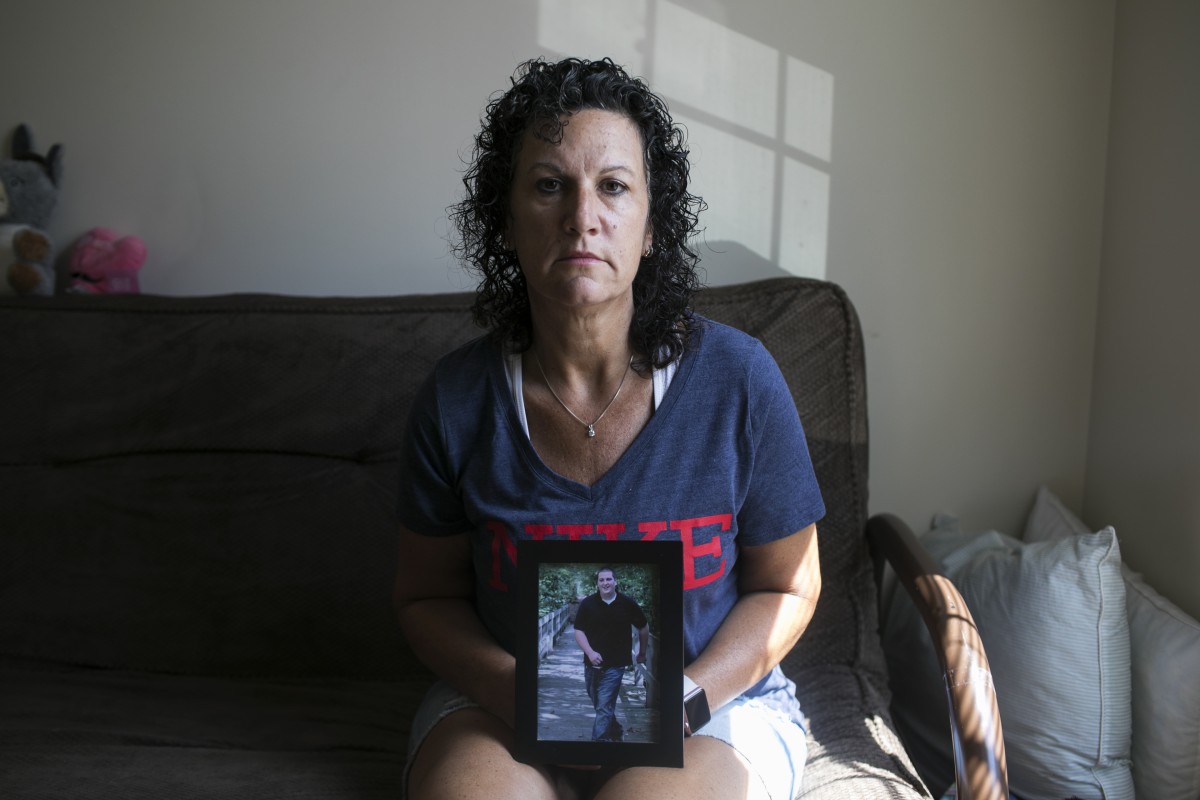Getting to JBR Vineyards in Giles County, Virginia, is a lot like what pioneer wine importer Neal Rosenthal describes of his first forays into off-the-beaten paths of cult French and Italian wine houses in his book “Reflections of a Wine Merchant.”
Rosenthal writes nostalgically about his adventures in wrong turns, when the lack of handy GPS navigation made his attempts to seek out novel wines for the American market in the late ‘70s that much more of an adventure into the unknown.
In Giles County, too, there’s a lot of meandering through winding country roads marked only by route numbers. But unlike in European wine country, where vineyards neatly carpet the ground for miles, the Appalachian forests often hide manicured grape vines until sudden openings appear on sloping hillsides.
Jessee and Deborah Ring, owners of JBR Vineyards, had their share of meandering and false starts in bringing their winemaking dreams to fruition. Two failed grape crops preceded a 2006 harvest that was deemed successful even though only 40 percent of the vines survived. Despite these challenges, in 2017, the Rings harvested three tons of grapes, which translates to more than 750 bottles.
The establishment of vines at JBR Vineyards stands out for reasons beyond an increase in grape and wine production on the property. The Rings are growing “classic” wine grapes, technically known as Vitis vinifera, including Riesling and Pinot Noir, two grape varieties that specifically favor cooler and drier climes. Pinot Noir has a notorious reputation as a finicky and fragile grape and is even more challenging to grow in the asphyxiating humidity of the mid-Atlantic. It needs cool weather to thrive, but when temperatures drop too low, the grape withers on the vine.
“With classic grapes, dealing with mold and mildew is constantly a challenge in Virginia,” said Deborah Ring. “The grapes are more prone to black rot. Critters also have to be kept at bay with electric fencing.”
In a region of Virginia known more for its affiliation with working class spirits like whiskey and moonshine, wine fever has bolstered grape cultivation, with winemakers leading a culture shift that started 40 years ago. Today the Rings and other commonwealth vintners are following in the footsteps of some long-established wineries in southwestern counties.
Since 1978, locals and tourists alike have been familiar with Chateau Morrisette, a vineyard in Floyd, Virginia, known for its iconic semi-sweet Our Dog Blue blend of Riesling, as well as its sweet dessert wine, Red Mountain Laurel.
Newer wineries have continued to spring up at a steady clip in the region. Abingdon Vineyards began operation in 2001 and closer to Blacksburg, there’s Beliveau Estate which began producing wine in 2011.

When the wine industry started gaining traction in the ‘70s as more than a casual passing fancy for retirees, there were six wineries in the commonwealth. That number exploded to 46 in 1995 and to 107 in 2005.
Fast forward to the present day and Virginia is home to nearly 300 wineries, the sixth-most in the nation. Many have clustered in central Virginia, where factors such as elevation and climate are generally favorable to vintners. Those wineries also leverage their proximity to the throngs of tourists from metropolitan Washington, D.C., promoting the region’s prestige as home to the Monticello American Viticultural Area.
In the southwestern corner of Virginia, Congressman Morgan Griffith (R-VA, 9th District) thinks the popularity of wineries will bolster a region that can support its identity as both a rugged outpost and a place that caters to more diverse tastes. Other sections of the state have reconciled these seemingly contrasting selves in the form of agritourism, an industry that supports 344,000 visitors and $120 million in the Southwest region of the state.
Other agritourism businesses in Giles County include Doe Creek Farms, a pick-your-own apple orchard. In addition to providing fresh fruit for its visitors, Doe Creek hosts weddings and offers wine from their family vineyard, located a couple of hours away in the town of Hurt, along the Virginia-North Carolina border.
“It’s important to have that ability for people to tour an area [with wineries] and be able to say ‘let’s try that one’ and go and see a winery that’s a little ways down the road,” said Griffith at JBR’s opening earlier this summer.
But the fact that the Rings are growing vinifera grapes at all has just as much to do with an environmental and climate shift as it does a culture shift in this part of the state.
As temperatures rise and weather patterns become increasingly unstable, erratic weather events associated with a changing climate will prove difficult for managers many agricultural endeavors worldwide, especially wineries.
In recent years, Giles County has experienced the same warming trend affecting world-renowned wine regions, including Champagne in northeastern France. The Rings’ 2018 harvest, though one of the most prolific in JBR’s history, started in August for the fifth time in 15 years. That’s early for a harvest that typically begins in early September and was purported to have begun in October 30 years ago.
“Back in the ‘80s it was tough to put in a vineyard in that part of the state,” said Tony Wolf, professor of viticulture and director of the Alson H. Smith Jr. Agricultural and Research Extension Center in Winchester, Virginia. “In 1985, it would reach -20 or -25 degrees in the winter and it was hard to plant any wine grapes, and certainly not vinifera.”
Wolf came on board as Virginia Tech’s viticulture expert in the ‘80s. Many of the stand-out wine varietals of Virginia we know today gained notoriety after Wolf’s research initiatives scientifically determined which grape varieties would work best in the region. Well adapted to the warm, humid climate, Viognier, Virginia’s official state grape, and the hybrid Chambourcin are among many varieties the state is known for today.
Cultivation of classic grapes is still a rarity in Virginia, especially in Appalachian counties. Of the 5,772 tons of vinifera grown in Virginia in 2017, only 53 of those tons were Pinot Noir. The few tons at JBR Vineyards represented the only Pinot Noir harvest in Giles County.
Would it be easier to grow native hybrids of grapes in this part of the world? Sure. But in spite of the difficulty in growing classic wine grapes in Southwestern Virginia, Jessee Ring wouldn’t have it any other way.
Like many American winemakers, Ring is smitten with the mythology of European grape varieties and the wines they produce. He’s transfixed with growing such prestigious varieties in the hills and valleys of Southwest Virginia.
“The best wines are made from classic wine grapes,” Ring said. “Developed wine palates prefer these. Pinot Noir produces subtle flavors and ages well. In fact, it gets better with age.”
And while classic grapes face plenty of challenges in Appalachia, Ring believes there could also be a practical reason for planting varieties such as Pinot Noir. The grape ripens early, so under certain conditions, it could actually be less susceptible to weather-induced conditions such as mold and rot, compared to its later-ripening cousins.
If growing wine grapes is a burgeoning enterprise in the tiny triangle point of Southwest Virginia, so is drinking their fermented juice. Such a phenomenon is evident at The Blacksburg Wine Lab, a recently opened establishment that’s part salon, part wine bar, part gathering place.
“For years I’ve been saying, ‘I should open a bar,’” said John Boyer, who co-manages the establishment with his business partner Katie Pritchard. “We’re mostly trying to make this into a wine-focused community center. It’s a place where people come together to hang out. Wine brings people together and wine starts people talking.”

Boyer is a Virginia Tech geography instructor, renowned for dismantling the pretense of wine and making it accessible to the larger public through his Geography of Wine class. Though class enrollment started out small in number 18 years ago, it was most recently offered to 1,300 online students.
Boyer’s class was born out of his own appreciation for viticulture. In the early ‘90s, as a geography student, he analyzed the grape growing potential of land parcels across Virginia, which was still just waking up to its potential as a wine-producing state. Boyer became enamored with the idea of a potentially heavy hitting wine industry in the commonwealth, capable of making wines that express terroir in the same way its national and international counterparts do.
A mere 20 years and 250 wineries later, Virginia is far from a sleepy outpost of wine production.
Many Virginia wines, like Octagon from Barboursville Vineyards near Charlottesville, are critically acclaimed, going nose-to-nose with wines from France and California. Wine critic and former Wine Spectator editor James Suckling recently tasted through some Virginia wines and posted his enthusiasm for them on his Instagram account, saying of the 2014 vintage of Octagon that it was, “one of the best reds in Virginia. All about balance and fine structure.”
Pritchard, who is in charge of food and wine pairing at the Wine Lab, is a former student of Boyer’s and enjoys the idea of exploring wine regions in a glass, whether those locales are down the road or across the ocean.
“You can go to a wine bar and travel the world through wine,” said Pritchard who opted to showcase Sicilian wine and victuals for the lab’s inaugural tasting event.
If wine can be a gateway to understanding terroir and culture, the characteristics of a region as they are rendered in the subtle aromas and tastes inside a glass, it raises the question: Will a grape cultivated in southwestern Virginia ever pass muster against its European cousins, exhibiting the region’s mountainous limestone, gently rolling hillsides and humid summers? Pritchard thinks it’s possible.
“Fifty years from now they might find the perfect grape that grows really well in a microclimate of Giles,” she said.
But will that grape be Pinot Noir, like those grown at JBR Vineyards? The answer to that might be that it’s just a matter of time.



